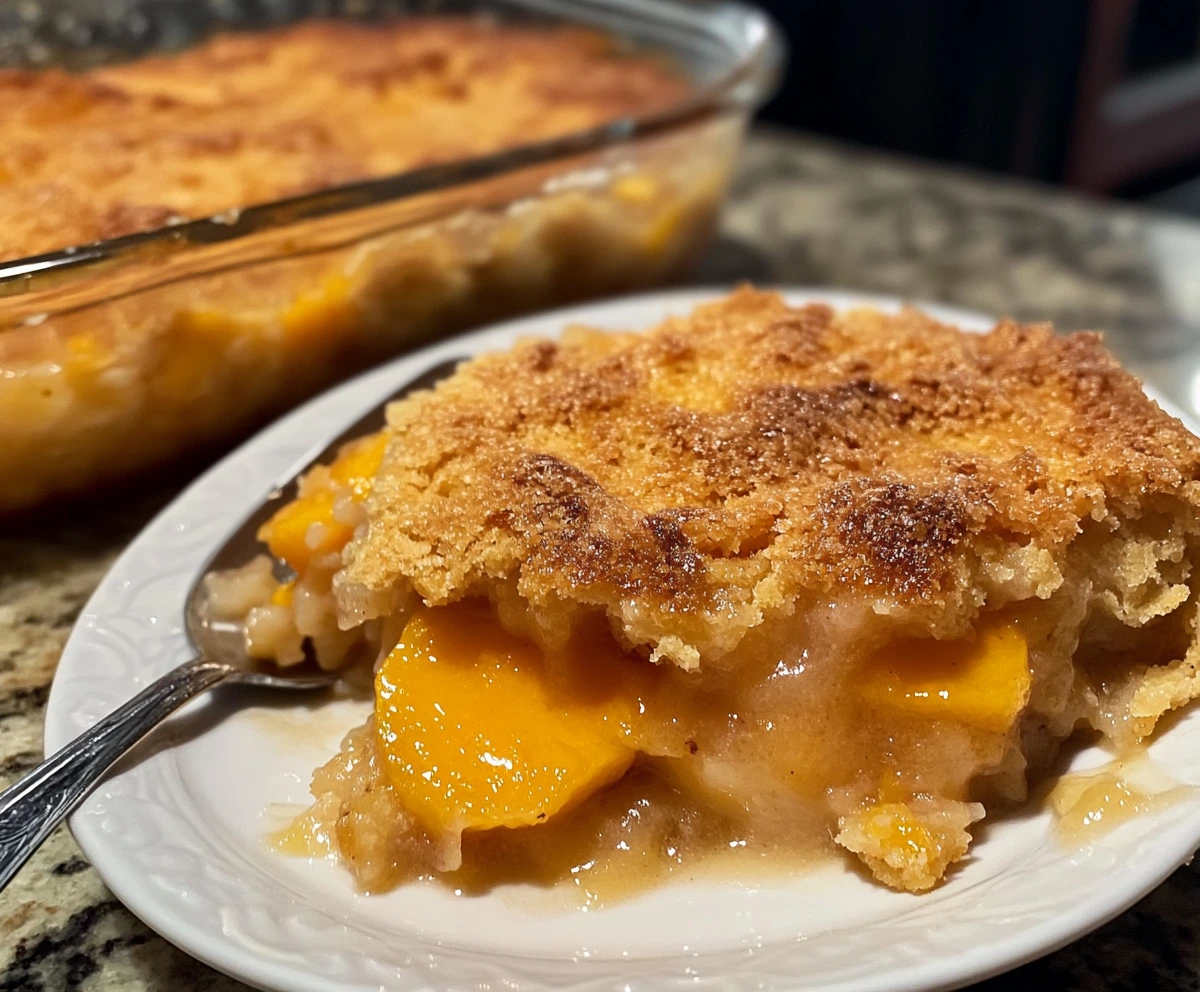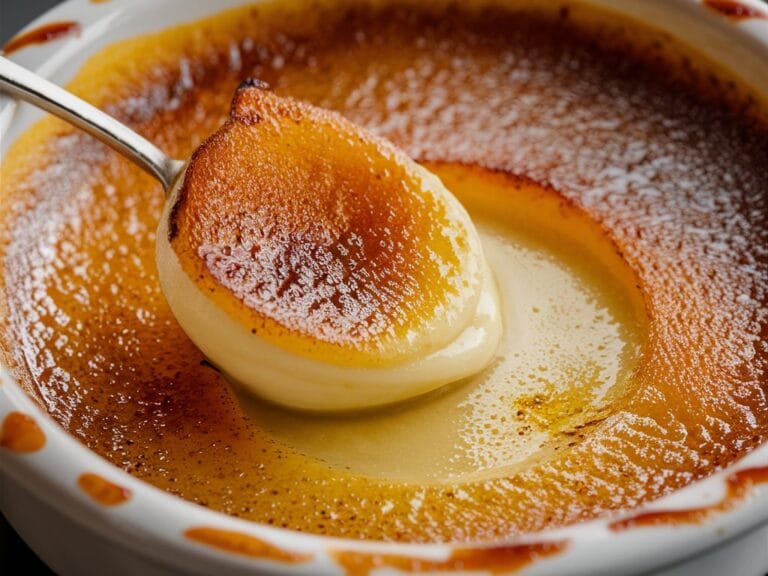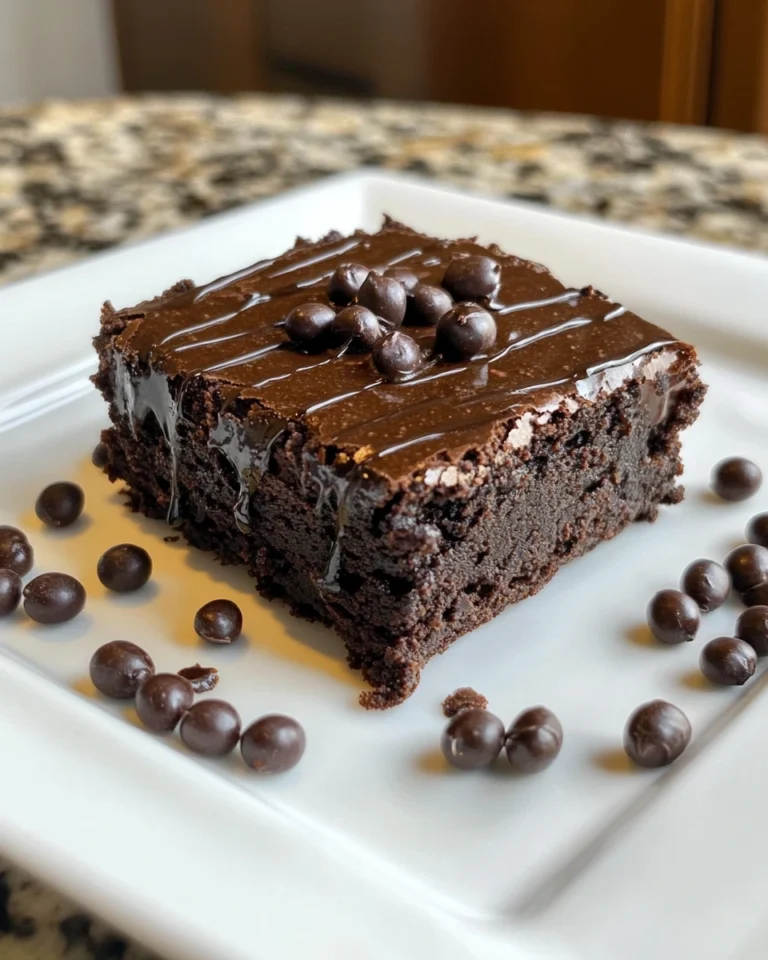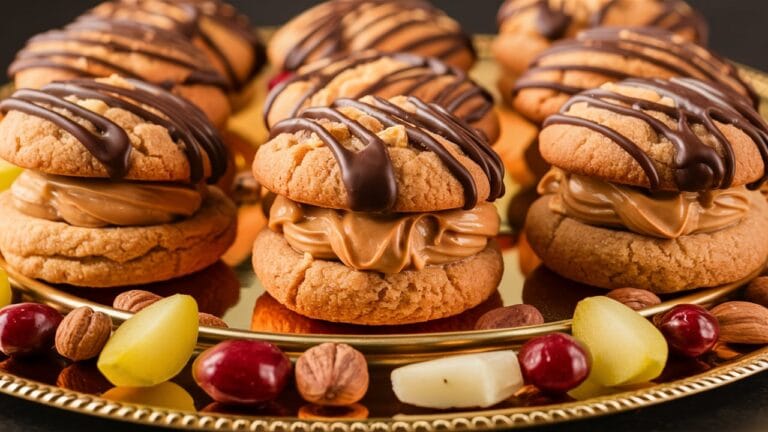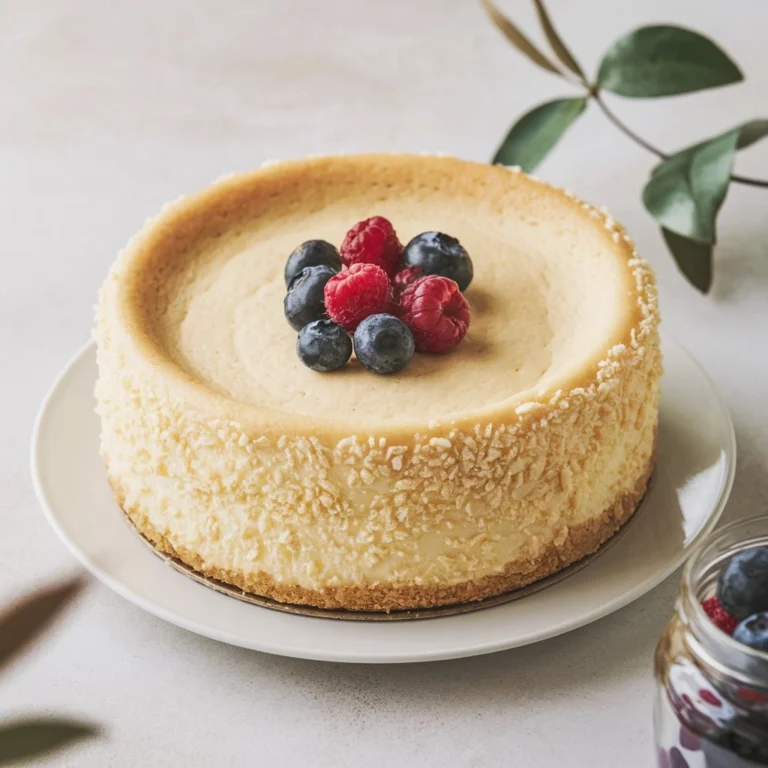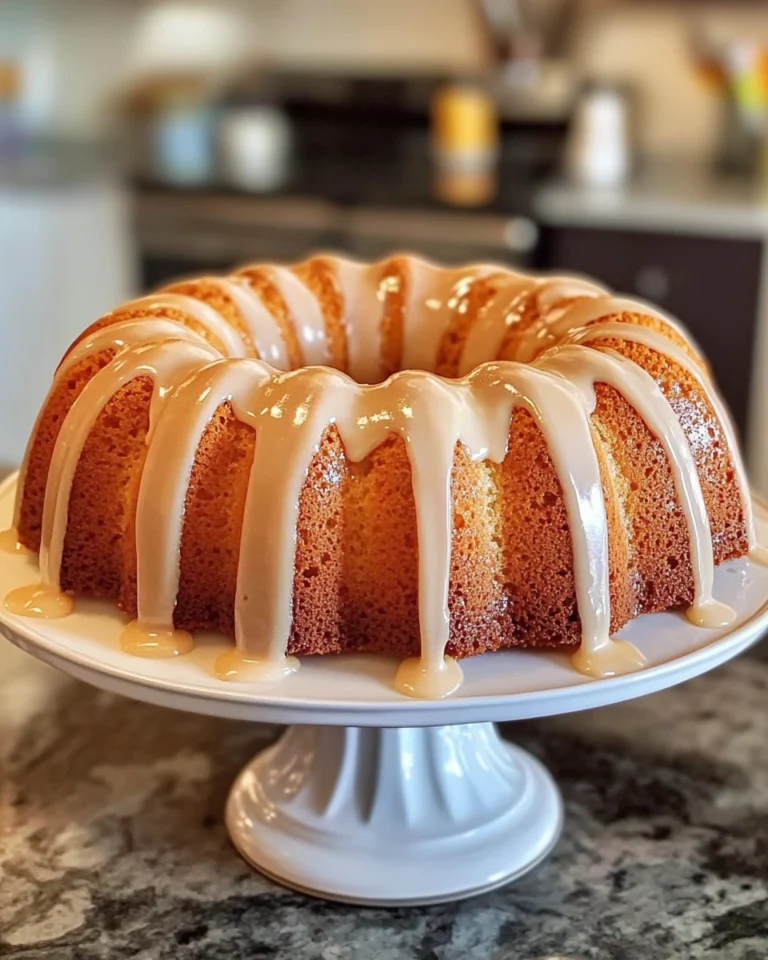Why Did My Cobbler Turn Out Like Cake?
Cobblers are a beloved dessert in many households, combining juicy, sweet fruit fillings with a rustic, biscuit-like topping. Whether you’re using peaches, berries, or apples, a well-made cobbler offers a beautiful blend of textures: a soft, buttery topping that crisps around the edges and a bubbling fruit base beneath. However, for many bakers, a common problem occurs: instead of that signature crumbly, biscuit-like top, their cobbler turns out more like cake.
If you’ve found yourself wondering, Why did my cobbler turn out like cake?, you’re not alone. In this article, we’ll explore the reasons behind this problem and provide detailed solutions to ensure that your next cobbler comes out perfectly. We will also dig into different styles of cobbler, offer insights into ingredient ratios, and give you foolproof tips for getting it right every time.
What is a Cobbler?
Before addressing why your cobbler might resemble a cake, it’s important to understand what exactly makes a cobbler unique. A cobbler is a traditional baked fruit dessert that has its origins in early American cooking. Unlike a pie, which has a smooth, evenly rolled-out crust on top and bottom, a cobbler features a rough, more rustic topping—typically biscuit dough or a drop batter—that is placed on top of the fruit before baking. This topping is key to what makes a cobbler distinct.
Key Characteristics of a Traditional Cobbler:
- Rustic Appearance: Cobblers are known for their rough, uneven topping. It’s supposed to resemble cobblestones—hence the name—where lumps of dough are scattered across the fruit, allowing the juices to bubble through the gaps.
- Biscuit-Like Topping: The topping for most traditional cobblers is a biscuit dough, which should turn out soft in the center but golden and crisp around the edges. Some regional variations use cake-like batters, but the defining feature of a traditional cobbler is that it shouldn’t have a uniform, cake-like crumb.
- Juicy Fruit Base: The fruit component of a cobbler should be juicy and slightly thickened, but not overly runny. As the cobbler bakes, the fruit juices combine with the sugar and thicken into a luscious sauce that pairs beautifully with the tender dough.
What Makes a Cobbler Different from a Cake?
Cobblers and cakes share some similarities in ingredients, but the outcome should be very different. Let’s break down the differences to understand where things might go wrong.
1. Topping Texture
- Cobbler Topping: Cobblers traditionally use a biscuit-like topping or a softer drop dough. This dough doesn’t fully cover the fruit. The intention is for the dough to create a rustic, uneven texture with parts of the fruit bubbling through the topping. This allows the juices to interact with the topping, creating a soft, moist interior with crisp, golden edges.
- Cake Batter: Cake, on the other hand, uses a smooth batter that’s poured into a pan, then baked until it forms a uniform, spongy texture throughout. It’s meant to rise and become fluffy and light, which is the opposite of the rustic texture desired in a cobbler.
2. Fruit Integration
- Cobbler: In a cobbler, the fruit sits underneath the topping, often in large chunks or slices. The juices from the fruit should mingle with the topping to enhance its flavor, but the fruit remains a separate layer.
- Cake: Cake recipes often incorporate fruit into the batter itself, creating a more homogenous texture where the fruit is embedded throughout.
3. Structure and Density
- Cobbler: The cobbler’s structure is looser, allowing the dough and fruit to create varying textures—crispy, doughy, soft, and juicy.
- Cake: Cakes are meant to have a light and even texture, designed to rise uniformly throughout the batter.
When your cobbler turns out like cake, it’s usually because one or more aspects of the topping have been thrown off—whether it’s too much batter, too much liquid, or incorrect ratios of leavening agents, flour, or sugar. Let’s explore why this happens and how to fix it.
Why Did My Cobbler Turn Out Like Cake?
If your cobbler looks more like cake, it’s probably due to a combination of issues with the batter and the cooking method. Here are the most common culprits:
1. Excessive Batter or Flour
One of the most frequent causes of a cobbler that resembles cake is using too much batter or flour in the topping. The topping should be sparse enough to allow the fruit juices to bubble through, but if there’s too much batter, it will rise during baking, covering the fruit and creating a bready texture instead of the desired biscuit-like consistency.
Solution:
- Use Less Batter: The key to avoiding a cake-like cobbler is ensuring that your topping is minimal. Rather than completely covering the fruit, the batter should be spooned or dolloped onto the fruit in small, irregular portions. This leaves space for the fruit juices to break through, helping to create a more authentic cobbled texture.
- Consider the Proportions: For most cobbler recipes, aim for a ratio of about 2:1 fruit to topping. This will ensure that the fruit remains the star of the dish, while the topping is merely an accent.
Learn more about ideal topping-to-fruit ratios in cobbler.
2. Too Much Liquid in the Fruit
Another common issue is the amount of liquid in the fruit filling. If your fruit contains too much moisture, the juices will mix with the batter and cause it to spread out and rise like a cake. This problem is particularly common when using frozen or canned fruits, as these tend to release more liquid as they cook.
Solution:
- Drain the Fruit: If you’re using frozen or canned fruit, be sure to drain any excess liquid before adding the fruit to the cobbler. You can also pat the fruit dry with paper towels to remove any lingering moisture.
- Use Cornstarch: To help thicken the fruit juices and prevent them from turning your topping into cake, add a tablespoon or two of cornstarch to the fruit filling before baking. This will help the juices thicken as the cobbler bakes, creating a more cohesive filling.
Explore ways to manage excess liquid when making cobbler.
3. Incorrect Ratios of Ingredients
If your cobbler has a cake-like texture, it may be because the ratios of ingredients in the topping are off. Too much flour, sugar, or leavening agents like baking powder can cause the topping to rise and become more like cake.
Solution:
- Measure Ingredients Carefully: The ratios in your recipe are important. Too much flour will make the topping too dry, while too much sugar can make it overly sweet and cakey. Similarly, too much baking powder can cause the topping to rise excessively.
- Reduce Baking Powder: If you’re following a recipe that calls for baking powder, you might want to try reducing the amount by about half. This will prevent the topping from rising too much and creating a cake-like consistency.
4. Overmixing the Batter
When making cobbler topping, overmixing the batter can cause the dough to develop gluten, which leads to a denser, cake-like texture. Cobbler topping should be mixed just enough to combine the ingredients, leaving it light and airy.
Solution:
- Gently Mix the Batter: When making the cobbler topping, use a light hand. Stir just until the ingredients are combined, and avoid overmixing. A few lumps in the batter are fine and even desirable, as they will help create the crumbly texture associated with a good cobbler.
5. Baking Temperature and Time
If your cobbler is baking at too high a temperature, the topping can cook too quickly, rising like a cake and forming a firm, spongy texture. On the other hand, baking at a lower temperature for too long can cause the fruit to release too much liquid, which mixes with the batter and creates a gummy, cake-like texture.
Solution:
- Bake at 350°F (175°C): This moderate temperature is ideal for cobblers. It allows the topping to bake evenly without puffing up too much, and gives the fruit enough time to break down and release its juices without turning the batter into cake.
- Check for Doneness: Cobbler is done when the topping is golden brown, and the fruit is bubbling around the edges. Use a toothpick to test the topping—it should come out clean or with a few moist crumbs, but not wet or gooey.
Common Mistakes in Cobbler Making
Cobbler making is an art, and even small mistakes can result in a cake-like dessert. Here are some common mistakes that can affect the texture of your cobbler:
1. Using Too Much Topping
When making cobbler, less is more when it comes to the topping. Using too much batter or spreading it too evenly over the fruit can cause the topping to rise like a cake, creating a dense, heavy result.
2. Not Using Enough Fruit
If you don’t use enough fruit, the topping will dominate the dish, leading to a breadier texture. The fruit should be the main component of the cobbler, with the topping serving as a complement rather than the star.
3. Overmixing the Topping
Overmixing develops gluten in the dough, which can lead to a dense, cake-like texture. To avoid this, mix the topping just until the ingredients are combined, and don’t worry if there are a few lumps.
4. Using Canned or Pie Filling
While it’s tempting to use canned fruit or pie filling for convenience, these often contain too much liquid and sugar, which can lead to a gummy, cake-like texture in the topping. Whenever possible, use fresh or frozen fruit for the best results.
5. Not Letting the Cobbler Cool
Cobbler needs time to cool after baking to allow the fruit juices to thicken and the topping to set. Cutting into the cobbler too soon can lead to a soggy texture, as the juices haven’t had time to gel.
How to Fix a Cobbler That Turned Out Like Cake
If your cobbler has already turned out like cake, there’s not much you can do to change it after it’s been baked. However, there are several steps you can take to ensure that your next cobbler comes out perfect.
1. Reduce the Amount of Batter
One of the easiest ways to avoid a cake-like cobbler is to use less batter. The topping should lightly cover the fruit, allowing the juices to bubble through and create a rustic texture. Try spooning the batter onto the fruit in small dollops rather than spreading it out evenly.
2. Thicken the Fruit Filling
To prevent the fruit from releasing too much liquid and turning your topping into cake, try thickening the fruit filling with a little cornstarch or flour. This will help the fruit juices thicken as they bake, creating a more cohesive filling and preventing the topping from becoming too soggy.
3. Use Fresh or Frozen Fruit
Fresh or frozen fruit is always a better option than canned fruit or pie filling when making cobbler. Canned fruit contains too much liquid and sugar, which can affect the texture of the topping. If you must use canned fruit, be sure to drain it thoroughly before adding it to the cobbler.
Best Practices for Making the Perfect Cobbler
Now that we’ve covered the common mistakes and how to avoid them, let’s look at some best practices for making a perfect cobbler every time.
1. Use Fresh Fruit Whenever Possible
Fresh fruit has a better texture and flavor than frozen or canned fruit, and it releases less liquid during baking, which helps prevent a soggy, cake-like topping. If you’re using frozen fruit, be sure to thaw it completely and drain any excess liquid before adding it to the cobbler.
2. Cut the Fruit Into Even Pieces
For the best results, cut the fruit into even-sized pieces. This will ensure that the fruit cooks evenly and releases its juices at the same rate, preventing the cobbler from becoming too watery.
3. Balance the Topping and Fruit
A good cobbler should have a balance between the topping and the fruit. Aim for a ratio of about two parts fruit to one part topping. This will ensure that the fruit remains the star of the dish, while the topping provides a delicious contrast in texture.
4. Bake at the Right Temperature
Baking your cobbler at the right temperature is key to achieving the perfect texture. A moderate oven temperature of 350°F (175°C) allows the topping to bake evenly and crisp up without rising too much.
5. Let the Cobbler Cool Before Serving
Once your cobbler is done baking, it’s important to let it cool for at least 15-20 minutes before serving. This allows the fruit juices to thicken and the topping to set, resulting in a better texture.
Different Styles of Cobbler Toppings
While traditional cobblers feature a biscuit-like topping, there are several other styles of toppings that can be used, depending on your preference.
1. Biscuit Topping
This is the most traditional type of cobbler topping. The biscuit dough is dropped onto the fruit in small spoonfuls, creating a rustic, uneven texture. The topping should be crisp and golden on the outside, but soft and fluffy on the inside.
2. Drop Biscuit Topping
A variation of the traditional biscuit topping, drop biscuit toppings are quicker and easier to make. The dough is simply dropped onto the fruit without any rolling or shaping, creating a rustic, cobbled appearance.
3. Cake-Like Topping
Some cobbler recipes, such as those for dump cakes, use a cake-like topping. This type of cobbler is made by sprinkling dry cake mix over the fruit and then pouring melted butter or a liquid over the top. While this results in a more cake-like texture, it’s not considered a traditional cobbler.
4. Crumb Topping
Crumb toppings are another popular option for cobblers. Made from a mixture of butter, flour, sugar, and sometimes oats or nuts, the crumb topping creates a crunchy contrast to the soft fruit filling. This topping is often used in crisp or crumble recipes, but it can also be used in cobblers for a different texture.
FAQs
Why is my cobbler like cake?
If your cobbler turned out like cake, it’s likely because of too much batter, too much liquid, or overmixing the topping. Reducing the amount of batter and ensuring that the fruit is well-drained can help prevent this.
Why did my cobbler come out gummy?
A gummy cobbler is usually caused by excess liquid in the fruit filling. This can happen if you use frozen or canned fruit without draining it properly. Adding a thickening agent like cornstarch to the fruit can help absorb the excess liquid.
Will cobbler thicken as it cools?
Yes, cobbler thickens as it cools. The fruit juices will set and thicken as the cobbler rests, so it’s important to let the dish cool for at least 15-20 minutes before serving.
Why is my cobbler spongy?
A spongy cobbler is often the result of overmixing the batter or using too much liquid. Be sure to mix the topping gently and drain the fruit thoroughly to prevent a cake-like texture.
By following these tips and understanding the causes behind a cake-like cobbler, you’ll be able to master the art of cobbler making. Whether you’re using peaches, berries, or apples, a well-made cobbler will always feature a perfect balance of juicy fruit and a crisp, tender topping.
For more ideas on how to improve your cobbler recipes, explore additional insights in this guide.

